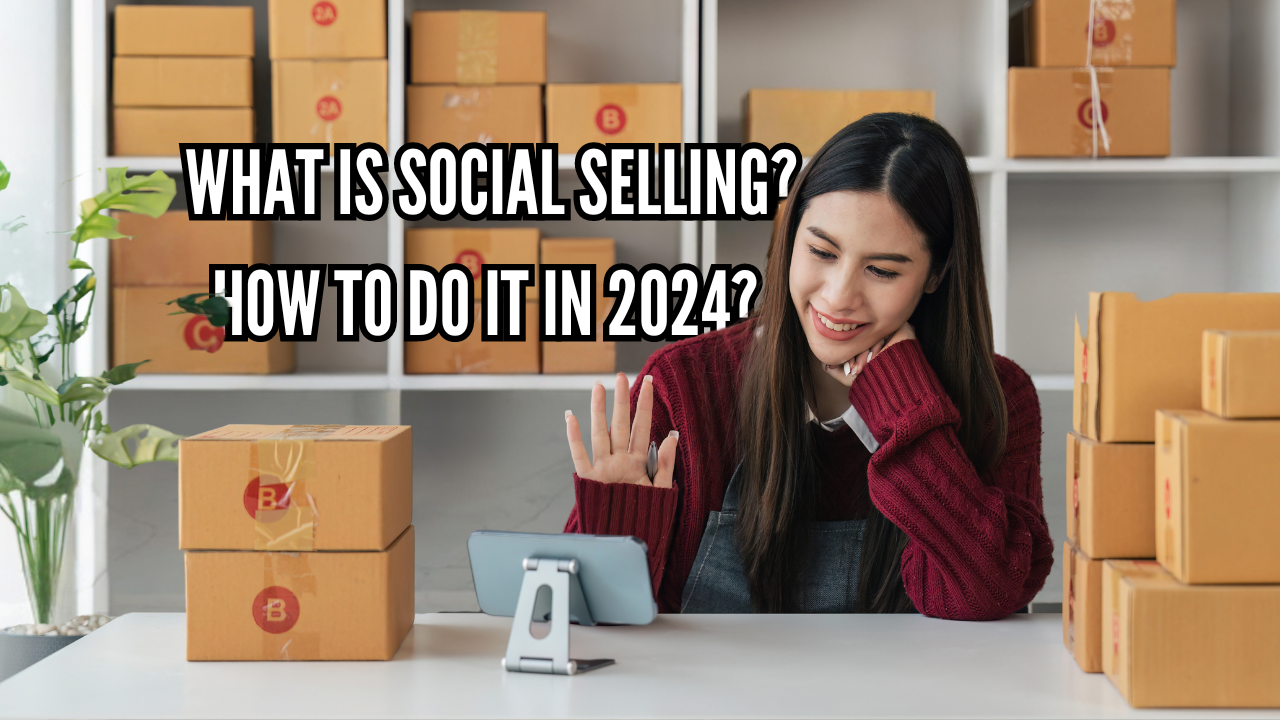
Social selling, much like digital marketing, has become an essential strategy for online brands aiming to expand their business. It’s quite likely that you’re already engaging in social selling without even realizing it! This practice is as widespread as it is misunderstood, often mistaken for social commerce, which involves selling directly through social media platforms.
In simple terms, social selling involves leveraging your company’s social media networks to engage and connect with prospects in order to generate leads and consequently, sales. Essentially, social selling is a more modern way to capture leads and build relationships with prospects, less intrusive than traditional sales calls (i.e., “cold calling”). It involves targeted, warmer communication that yields better results!
In this article, we’ll explain what social selling is, how it can benefit you, and provide concrete examples!
What is Social Selling?
Often mistaken for digital marketing and social commerce, social selling is actually used by sales professionals to identify prospects and organically guide them towards a brand through quality content and interactions. If one were to simplify and demystify the concept of social selling, it could be described as the digital (and far less intrusive) version of telemarketing.
Purpose of Social Selling
The objective of social selling is to help you find the right target audience and establish connections with potential clients, aiming to create long-term business relationships, all using social media platforms. From social listening to conversion, social selling is a comprehensive and effective tool for enhancing a sales strategy. By creating and sharing personalized, engaging content for prospects on social networks, social selling encourages users to gravitate towards the brand instead of experiencing intrusive outreach.
Example of Social Selling: Flowrette, the Small Brand that Grew
Flowrette’s story begins with Elodie, seeking a more hands-on and artistic project, who started crafting dried flower creations in October 2019. After juggling her day job and creative pursuits for a few months, Elodie, with support from her partner Côme, decided to fully invest in Flowrette. This decision aligned perfectly for the couple, who had longed to embark on an entrepreneurial journey together. With Flowrette now a joint project, Elodie handles the creative aspects while Côme, drawing from past e-commerce experiences, brings the brand’s website to life.
For Elodie and Côme, Flowrette is a brand meant to be shared daily, and what better platform than social media! Born on the internet, despite having a physical store, social selling was seamlessly integrated into Flowrette’s business strategy from the outset. With goals of both brand image and conversion, the duo focused on three social networks: Instagram, Facebook, and Pinterest.
Instagram and Facebook were chosen for conversion purposes, while Pinterest served a more exploratory role in the funnel, focusing on discovery and targeting. Despite the association of social selling with LinkedIn, particularly for brands heavily engaged in B2B communication, Elodie and Côme have decided to invest their time and energy in another upcoming platform: TikTok.
Best Platforms for Social Selling
To better understand how to integrate social selling into your business strategy, let’s explore the best platforms to initiate your efforts, platform by platform.
Social Selling with Instagram
Instagram boasts approximately 22 million monthly users in 2025, ranking among the top four most-used social networks in France alongside YouTube, Facebook, and WhatsApp.
For direct-to-consumer B2C brands aiming to express their brand universe, Instagram is indispensable. Lifestyle, fashion, and travel-related brands are all present on Instagram, and more B2C sectors are increasingly leveraging its potential.
The key to success? Instagram is the platform that narrates your story and expresses your brand’s allure and products through visuals! Therefore, focusing on visual content, varying themes, and publishing content that aligns with your brand identity and audience expectations is essential. By sharing content that interests your audience, you can engage, inform, and persuade them to interact with your brand. Don’t hesitate to engage them through contests, stories, and with an integrated store, you’ll have all you need to persuade and sell on Instagram!
Further read: How to get 10,000 Instagram followers – 10 essential tips
Social Selling with Pinterest
According to Pinterest Business, Pinterest has about 17 million monthly unique visitors in France. Overall, the platform states that 69% of its users are women.
Pinterest is a visual-based platform used for inspiration, research, and discovery, particularly among a predominantly female audience. Whether seeking fashion inspiration, home decor ideas, or gift suggestions, users find images that directly link to web pages. Therefore, Pinterest is valuable for directing leads straight to your website (and product listings)!
If you sell B2C products and your target audience is mainly female, don’t overlook Pinterest for your social selling strategy!
Social Selling with TikTok
Although Elodie and Côme from Flowrette have found a balance with Instagram, Facebook, and Pinterest to sell their products, they decided to integrate TikTok into their social selling strategy this year. “With TikTok, our goal is to reach a younger audience. It’s a powerful branding tool, but it demands a lot of time,” says Côme.
For him, TikTok’s strength lies in introducing the brand to a broader audience. While Instagram allows followers to discover products, it doesn’t fulfill the goal of discovery. TikTok, on the other hand, showcases content to millions of people, offering unparalleled visibility.
TikTok’s usage is increasing in France. Even though the platform is primarily used by 18-24-year-olds, recent platform data indicates a widening audience of 25-44-year-olds! So, it’s time to prepare video content that appeals to this engaged TikTok audience.
Read also: TikTok monetization: 5 solutions to make money
Our 5 Tips for Successful Social Selling
Drawing from Flowrette’s experience, here are five tips for successful social selling:
- Expand Across Platforms Diversify your social presence. “As a young brand, it’s essential to try multiple channels to promote your products,” says Flowrette. However, carefully identify the most relevant marketing channels for your brand to avoid spreading too thin.
- Stand Out Prioritize visual identity if your brand focuses on visual platforms like Instagram or Pinterest. Establishing a distinct brand identity is crucial in the midst of content saturation on social media.
- Exercise Patience Growing a community on social media is increasingly challenging. Côme advises patience. Rather than rushing contests to boost follower count, choose partnerships thoughtfully, aligned with your brand’s values and audience.
- Balance Organic and Paid Advertising Success in social selling lies in a balance between organic reach and paid campaigns. Côme emphasizes the importance of this balance for a brand’s success in social selling. Connecting Facebook, Pinterest, and Instagram to Shopify allows precise tracking of paid ads, gathering valuable data.
- Define Posting Frequency Define your posting frequency. Flowrette’s success partly stems from Élodie’s consistency on Instagram. Posting should be organic and authentic, reflecting your brand’s everyday life.
Now equipped with insights from Flowrette’s social selling journey, create compelling, personalized, and genuine content for your audience. Elevate your brand’s visibility and attract qualified leads to drive sales!
You may be interested in reading : A Guide to Selling Alcohol Online





